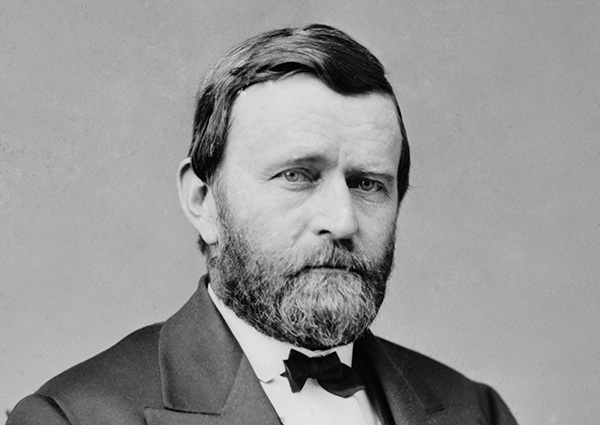Liberal Republicans and Democrats reacted in 1872 to the Credit Mobilier scandal, abuse of the Spoils System, on-going Radical Reconstruction, and federal corruption.
When a group of disaffected Republicans calling themselves Liberal Republicans met in Cincinnati, Ohio in May 1872, they had the perfect opportunity to defeat Ulysses S. Grant in the November election. Led by Missouri Senator Carl Schurz, the Liberal Republicans reacted to the growing scandals and widespread corruption associated within the Grant administration. Unfortunately, however, the Liberal Republicans emerged from the convention nominating the one man who had the least chance of defeating Grant, Horace Greeley, editor of the New York Tribune.
Ulysses Grant and the Stalwart Republicans
Ulysses Grant, associated with Union victory over the South in the last years of the Civil War, had been an ideal presidential choice in 1868 for the Republican Party. Former President Andrew Johnson had been deemed a Southern sympathizer and endured impeachment although the Senate trial did not result in conviction. Grant, who had presidential ambitions before 1868, was the ideal candidate.
Grant, however, was no politician and though personally honest, found himself under the control of the Republican “stalwarts” in Congress. An 1872 political cartoon created by Matt Morgan, for example, features an incompetent Congress with Senator Roscoe Conkling, leader of the Stalwarts, pouring liquor into the glass of President Grant who is obviously already inebriated. A caption on the pillared wall declares, “The times demand an uprising of honest citizens to sweep from power the men who prostitute the name of our sacred party to selfish interests.”
Corruption and Nepotism in the First Grant Administration
Corruption during the first Grant administration reached as high as the office of Vice President Schuyler Colfax. Along with other Congressmen, Colfax was implicated in the Credit Mobilier scandal involving the diverting of railroad funds designated for the Union Pacific Railroad to personal use.
President Grant used nepotism and patronage to fill government positions with family members and friends. This flagrant use of the “spoils system” led to demands in reforming the civil service, an issue so important that the Liberal Republicans included it in their party platform. Grant’s Cabinet featured men who were incompetent and prone to corruption and bribery.
The Liberal Republicans and Horace Greeley
The Liberal Republican program addressed government corruption – Grantism, but focused on other needed reforms as well. These included tariff schedules enacted during the Civil War and recently strengthened by the Radical Republican-led Congress. The liberals wanted to end Radical Reconstruction and bring honesty back to government. Their party platform paralleled the views of Democrats, who also nominated Greeley at their convention.
Other potential candidates included Charles Francis Adams, scion of the Adams family that had already produced two presidents, John and John Quincy Adams. Charles Francis Adams, who had served ably during the war as the U.S. Ambassador to England, was considered too associated with New England aristocracy. Supreme Court Chief Justice Salmon Chase did not have national appeal and Carl Schurz was not born in the U.S.
Horace Greeley had been an outspoken critic of Grantism but over the years had made many enemies through his newspaper publishing. His perceived centrist position on the South cost him the votes of blacks and war veterans. Rather than allowing surrogates to campaign on his behalf, Greeley took to the people, frequently alienating voters by his speeches.
Outcome of the Election of 1872
Ulysses Grant decisively defeated Greeley and the Liberal Republicans, carrying all but six states. Utterly exhausted and grieving over the death of his wife, Greeley died shortly after the election in a sanitarium. Grantism would continue into the next election, the Tilden-Hayes campaign that represented the nadir of Stalwart Republican politics.
Sources:
- Paul F. Boller, Jr., Presidential Campaigns from George Washington to George W. Bush (Oxford University Press, 2004)
- Eric Foner, Reconstruction: America’s Unfinished Revolution 1863-1877 (HarperCollins, 1988)
- Page Smith, Trial By Fire: A People’s History of the Civil War and Reconstruction (McGraw-Hill,1982)
- William Bruce Wheeler and Susan D. Becker, Discovering the American Past: A Look at the Evidence, 5th Edition, Volume One (Houghton Mifflin, 2002)








